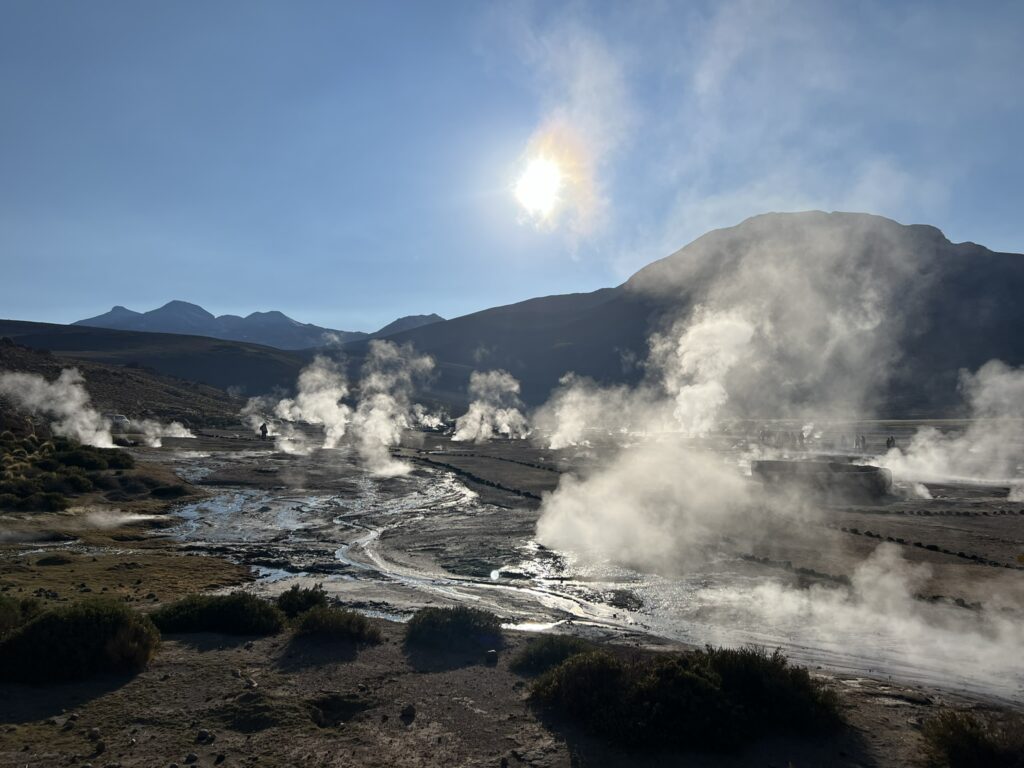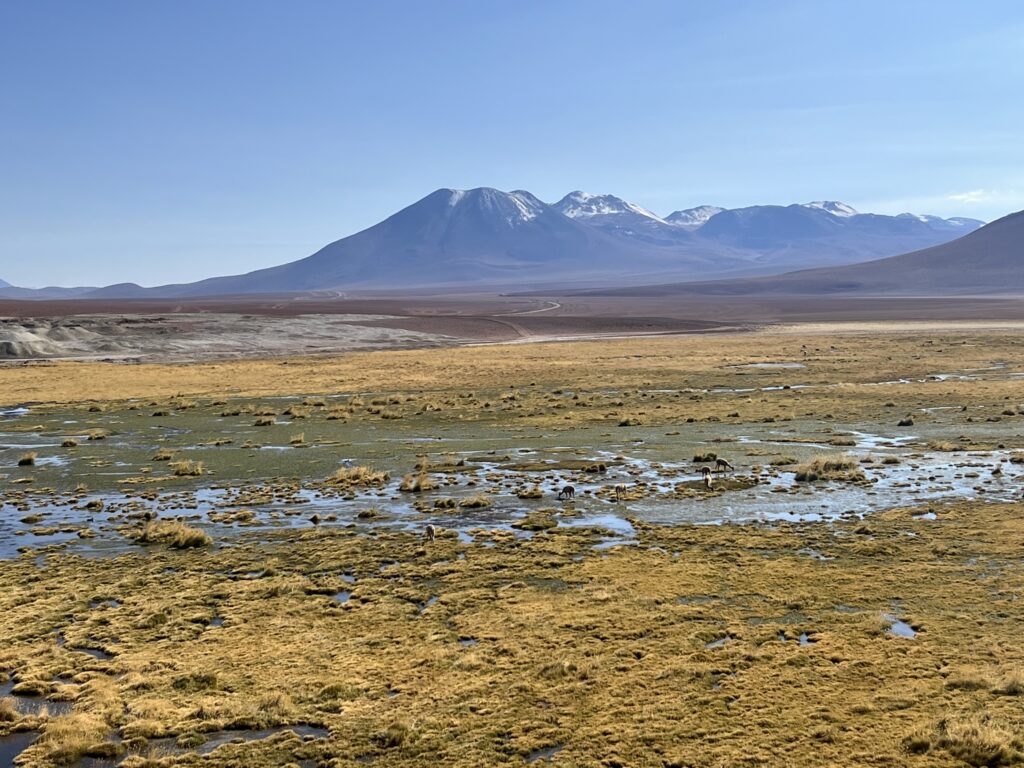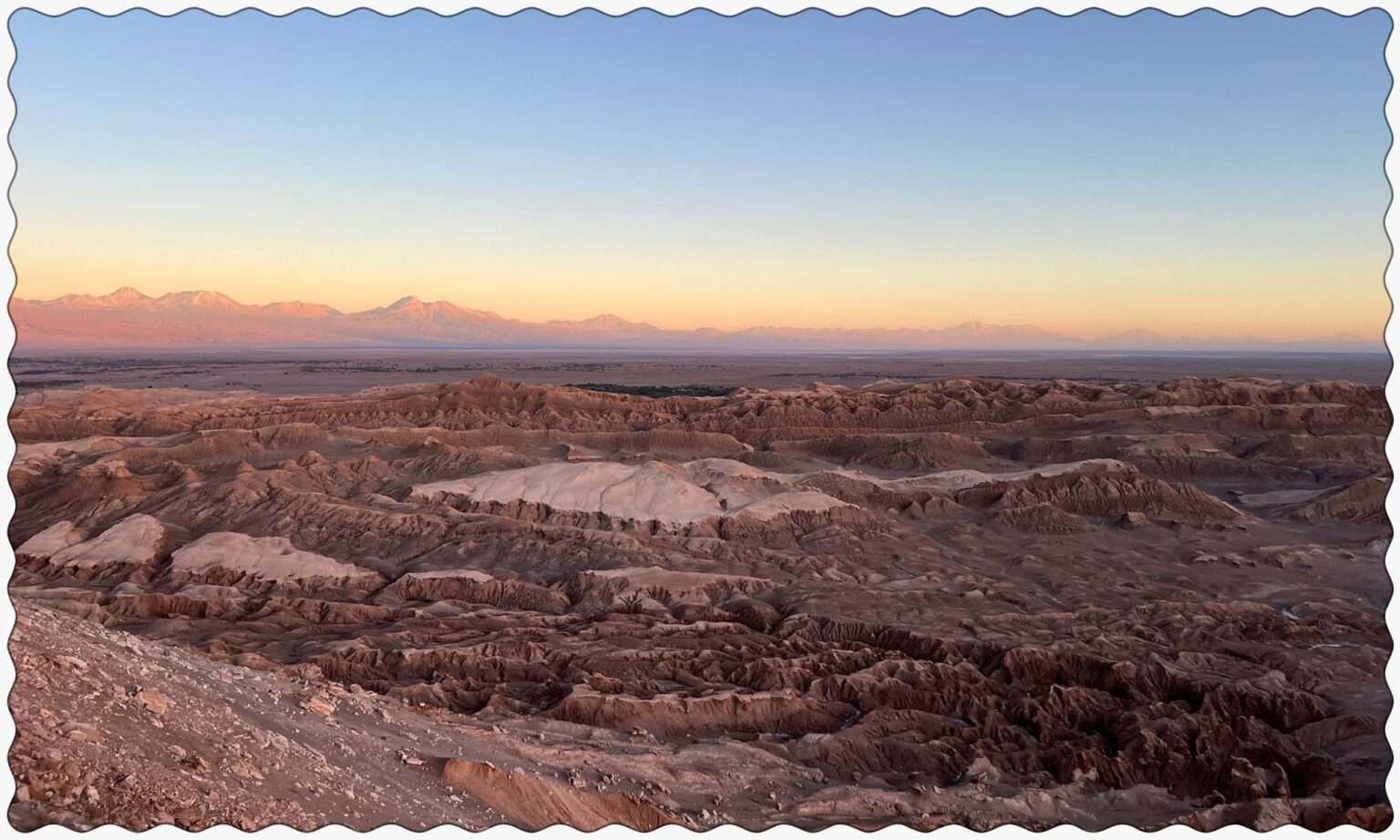San Pedro de Atacama is located in Northern Chile near the border of Argentina and Bolivia in the Atacama Desert. We spent the week here exploring the Atacama Desert, the driest place on Earth.
Best Thing I Ate This Week
Estofado de Guanaco at Baltinache Restaurant
San Pedro de Atacama is a tourist hub for exploring the Atacama Desert and the dining scene around town caters to the tourist population. The majority of restaurants are typical Chilean cuisine or tourist food such as pizza and sandwiches. Baltinache Restaurant caught our attention because it specializes in upscale indigenous fusion cuisine made from native ingredients found in the surrounding area.
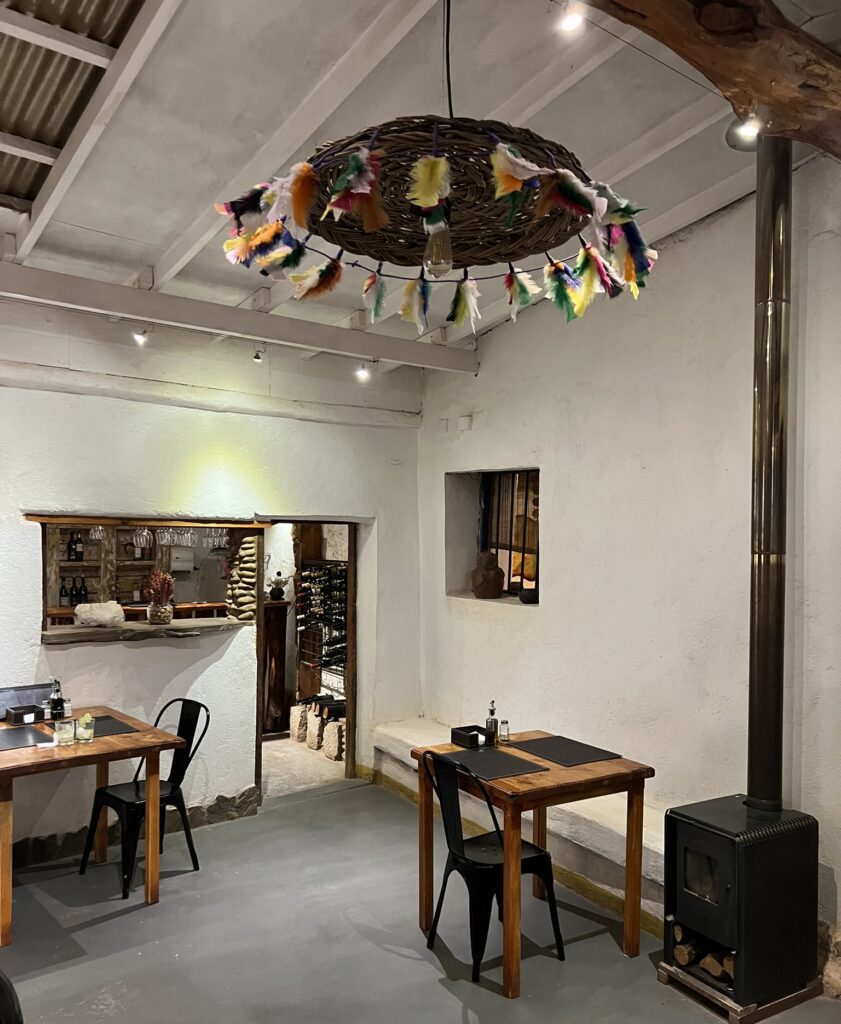
The menu at Baltinache rotates based on the day of the week, but they always offer a great drink program daily. One of their signature cocktails is the Rico Rico en el Desierto which is made from a traditional liquor using the Rica Rica plant from the region. I ordered the estofado de guanaco for my main dish which is a stewed meat of a wild animal that resembles a llama and roams this part of Chile in abundance. The guanaco has been a staple of the diet in the region for centuries and after trying this delicious dish I can understand why.
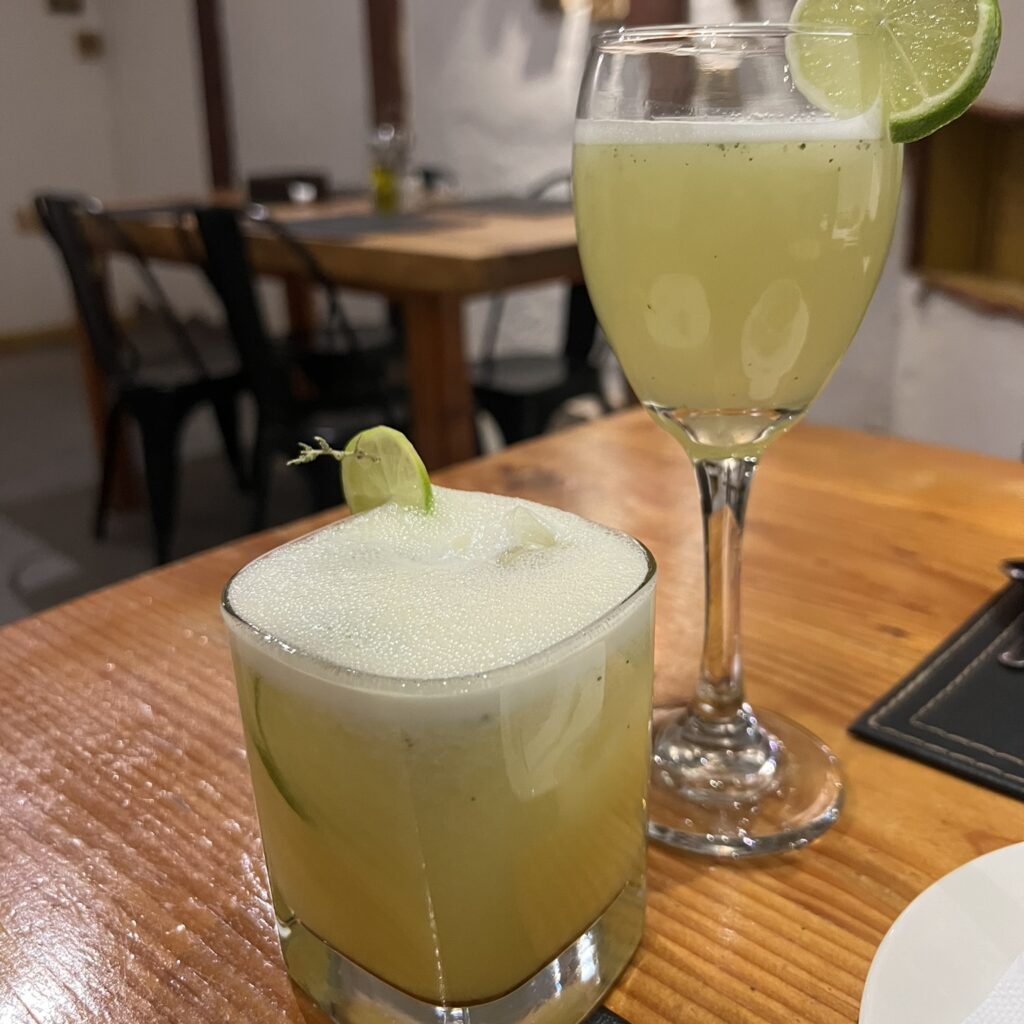
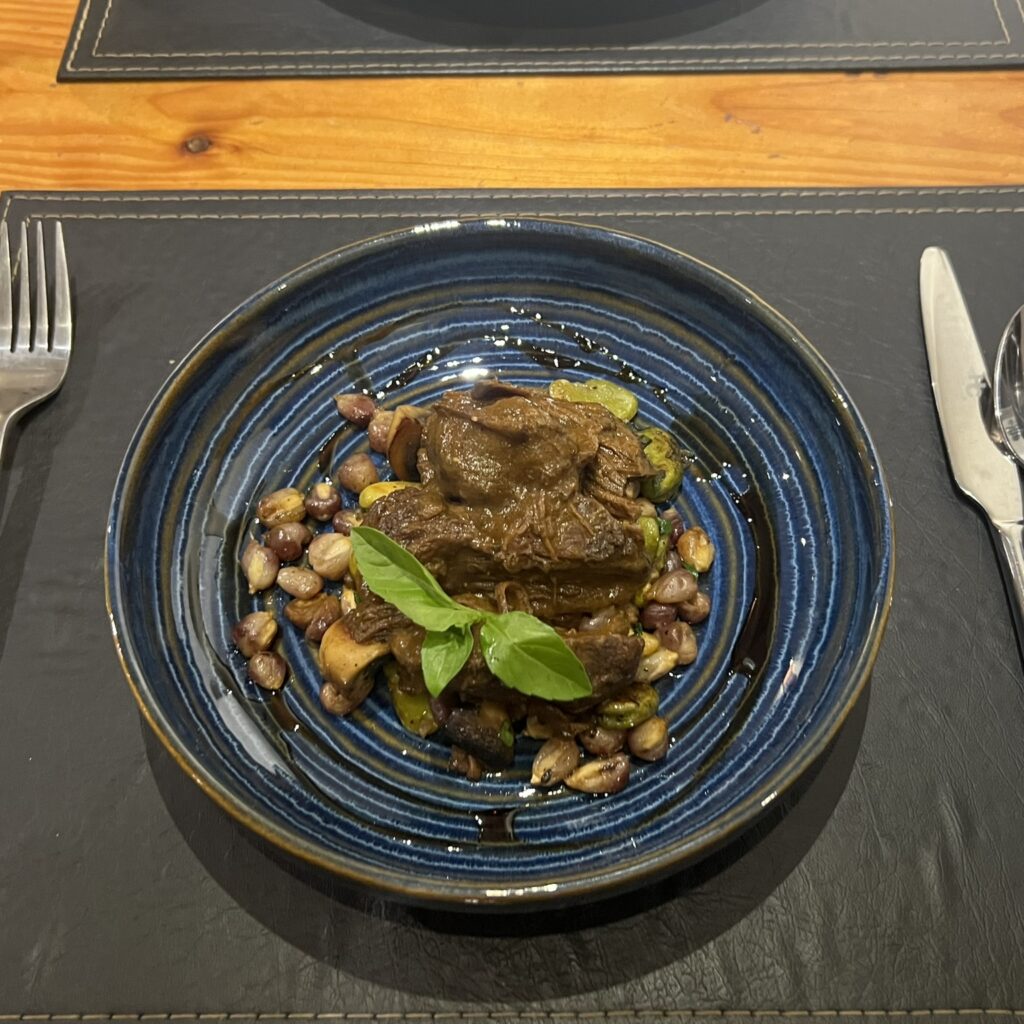
An Interesting Fact I Learned
There are more galaxies in the universe than stars in Milky Way - as seen from the atacama desert
The Atacama Desert is regarded as one of the best, if not the best, places on Earth to see the stars because of its high elevation, dry climate, and unpolluted surroundings. One of the most famous observatories is based here (ALMA) and although it is only accessible by astronomers, there are numerous ways for the average visitor to take in the beautiful night sky.
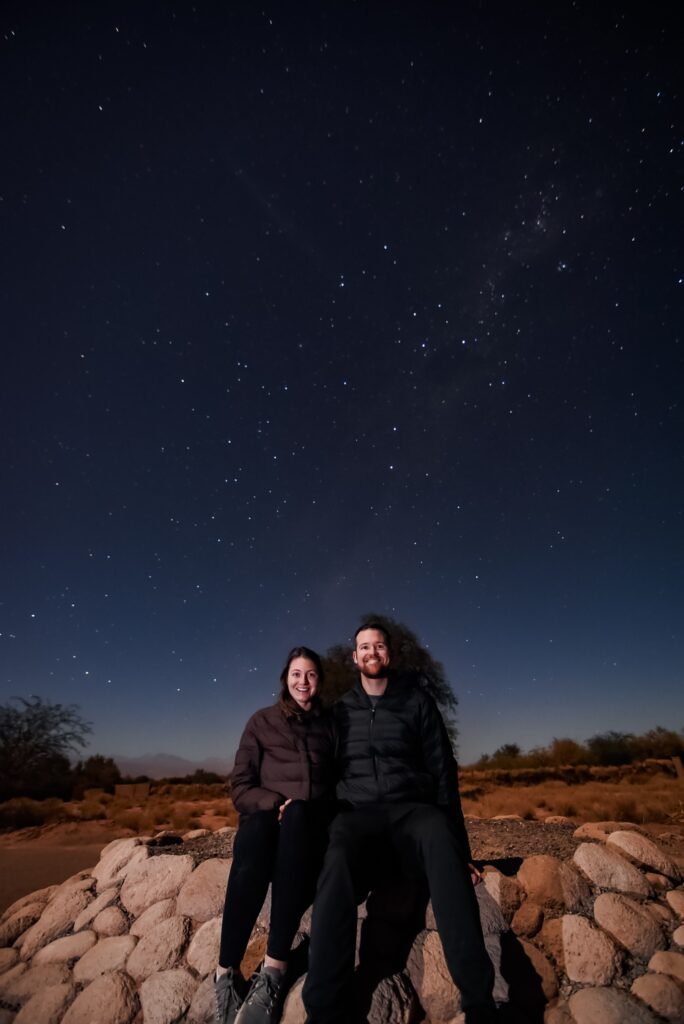
An Astronomico Tour was one of the top activities we were looking forward to during our visit but, when we arrived in town, we realized that it coincided with a full moon. This meant that the light from the moon would prevent us from being able to experience the mesmerizing clear views of the Milky Way that we had hoped to see. However, we were still encouraged to do the tour by others that we met, because they said it was still worth it to learn from the astronomy experts and view the skies with the moon.
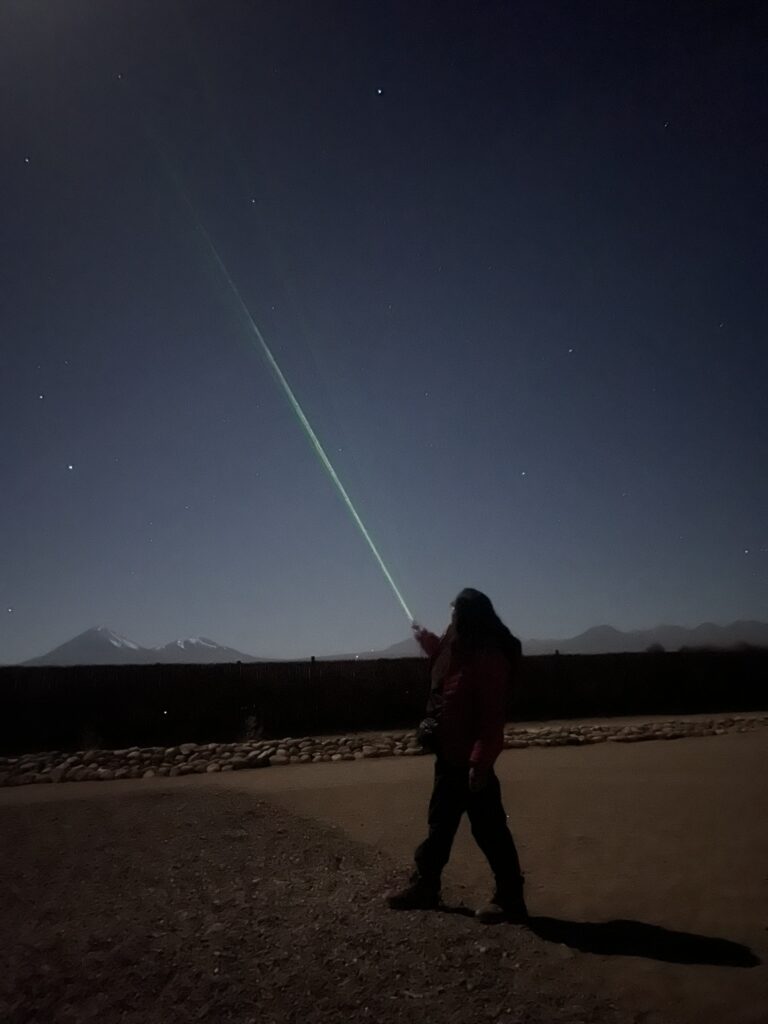
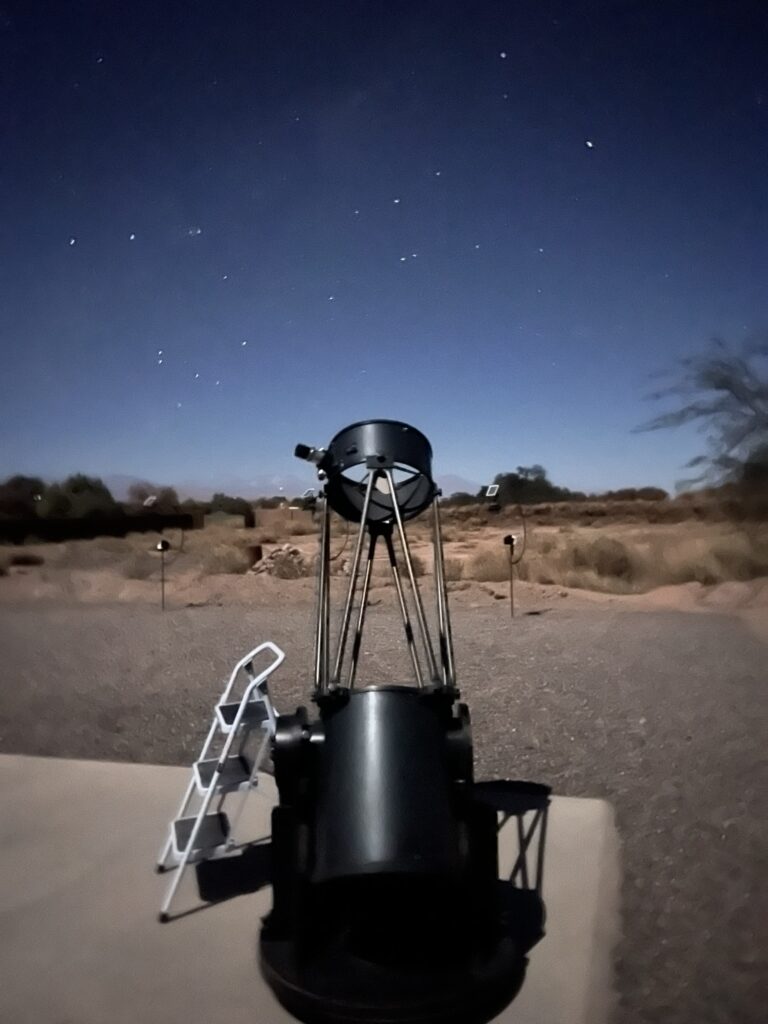
Our tour left from the Museo del Meteorito in the evening and was run by expert astronomers who worked there. We arrived at an outdoor observatory in the Atacama Desert and, even with the light from the moon, the number of stars we observed far exceeded almost any places I had previously visited. Throughout the night tour, we rotated through various telescopes, meteorite stations, and observation benches where we learned more facts about stars, galaxies, and the moon. One particular fact that stood out to me is that there are an estimated 100 billion stars in the Milky Way Galaxy and over 200 billion galaxies in the universe. This number was staggering and really put into perspective how small our planet is relative to the known universe.
My Travel Tip of the Week
Visit the tour offices in San Pedro of the Atacama desert for the best deals
To explore the Atacama Desert from San Pedro there are two primary options, renting a car or signing up for tours. We had just completed a road trip through the Quebrada de Humahuaca, and we received recommendations that to see some attractions it would be less stressful to go with a tour group given the long distances and bumpy roads. An additional bonus to going with a tour group was that they were run by guides who could share more about the unique geological features that were experienced throughout the tour.
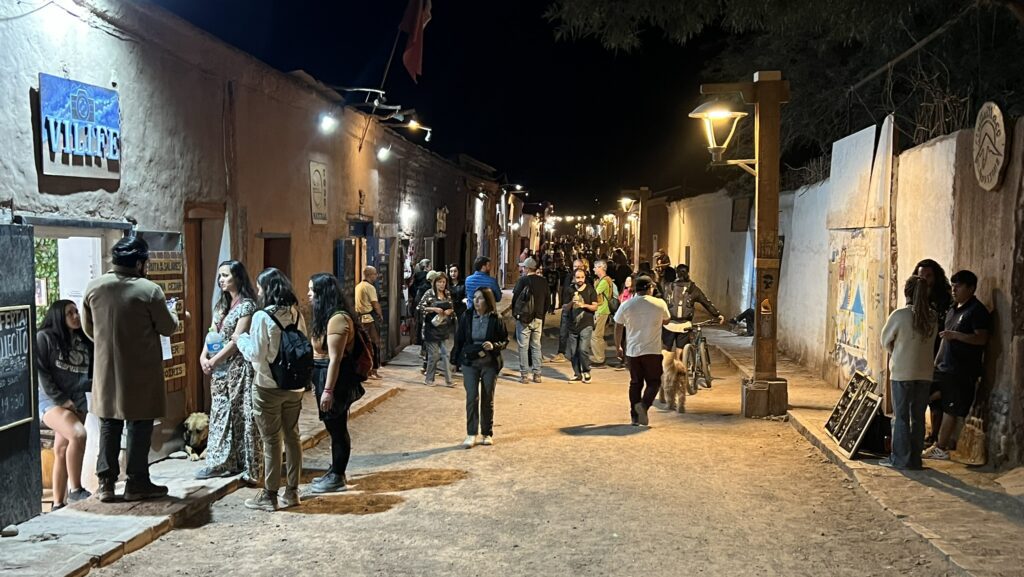
We ultimately decided it would be best to go with a tour company during our stay. Initially, we started doing research online but the prices seemed high and it was difficult to understand what was included in the packages. Since we hadn’t booked anything prior to arriving we thought it would be easiest to stop in at the offices to learn more. Walking around the center of San Pedro de Atacama we were overwhelmed by the number of tour companies offering the seemingly same tours. We randomly stopped in one office to learn more and quickly realized the in-person prices were far lower than online, and the employees provided much more information on what was included.
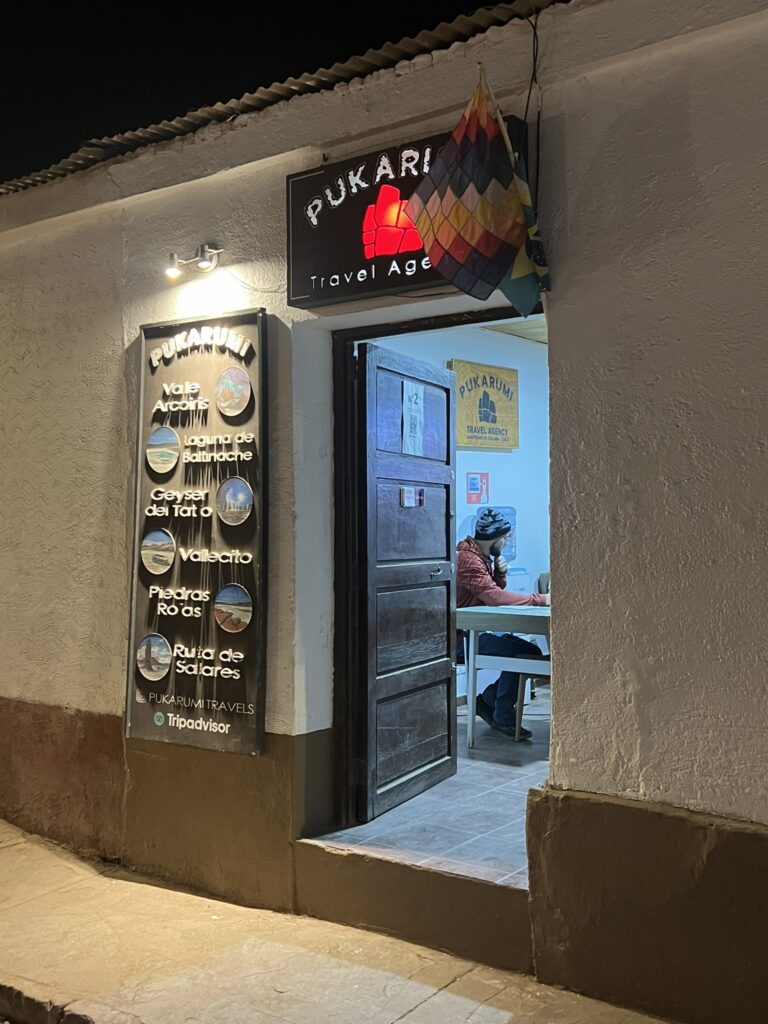
We continued to stroll around town and found 2 other tour offices with high ratings from customer reviews online. Surprisingly, all of the offices offered almost identical prices. The tours that stood out the most to us were the Valle de Luna, Astronomico, Geysers Tatio, and Laguna Cejar Tours. However, if we had not bused over the Jama Pass from Argentina to make our way to San Pedro de Atacama, we may have booked the Ruta de Salares Tour. And if we were not going to Uyuni we may have booked the Piedras Rojas Tour. We booked our tours with an office with high reviews and accepted credit card payments to avoid withdrawing Chilean pesos to pay.
My Additional Anecdote This Week
Diverse landscapes are located throughout the Atacama Desert
Knowing the Atacama Desert was the driest place on Earth, I expected the majority of our time there to be spent in desolate landscapes with little variation. After exploring the area with a handful of different trips, I came away impressed by how diverse the landscapes were only a few hours away in any given direction.
Our first introduction to the area was when we bused over the Jama Pass from Argentina. On the ride down into San Pedro we caught our first glimpses of vicunas basking near the high-elevation waters, glimmering salt flats, and the towering Volcan Licancabur.
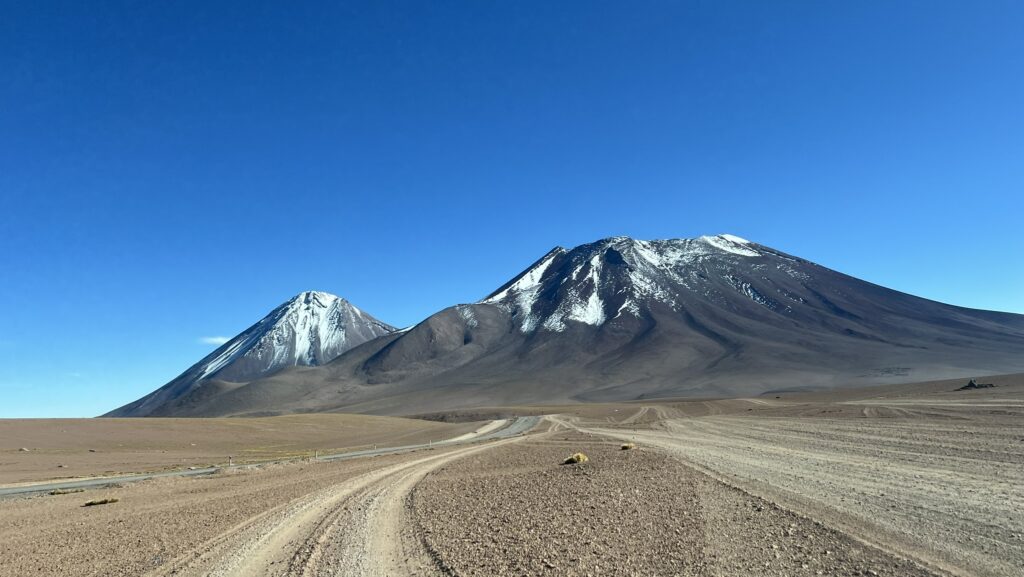
The next experience was in the Valle de La Luna, which was completely different. It featured massive dunes, long stretches of white-colored rock valleys, and incredible lookout points of the rock formations jutting up from the surrounding desert. Our following experience also varied greatly as we learned more about the salt lagoons (Tebinquinche and Cejar) in the area and were even able to float in the salty Laguna Piedra.
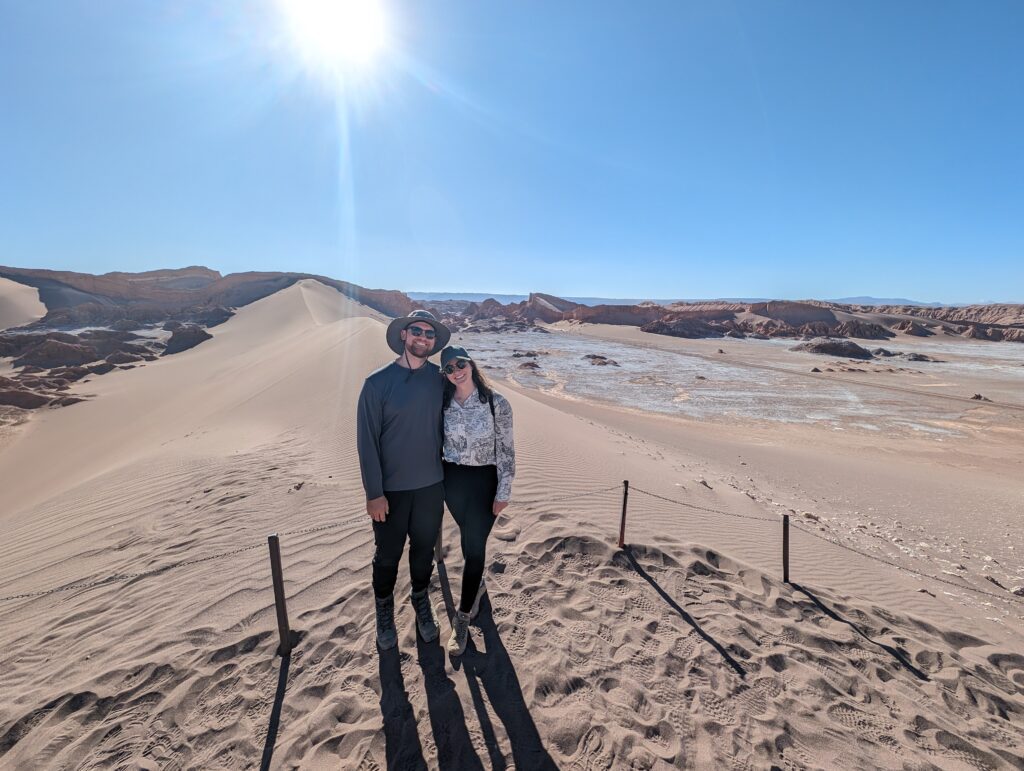
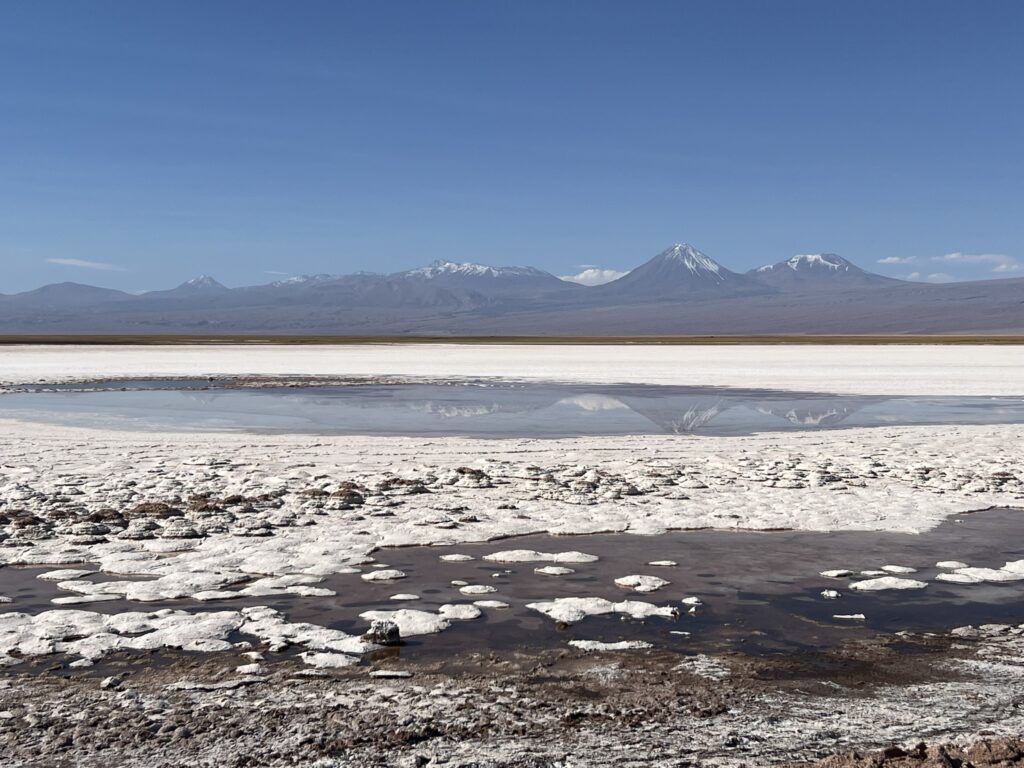
The final experience of visiting Geysers Tatio might have been the most remarkable. We arrived as the sun rose over the mountains in the distance and all the steam from the geysers billowed above. On the way back to San Pedro from the high-elevation geysers, we saw Vado Rio Putana, a wetland area filled with vicunas and birds in a lush green environment.
